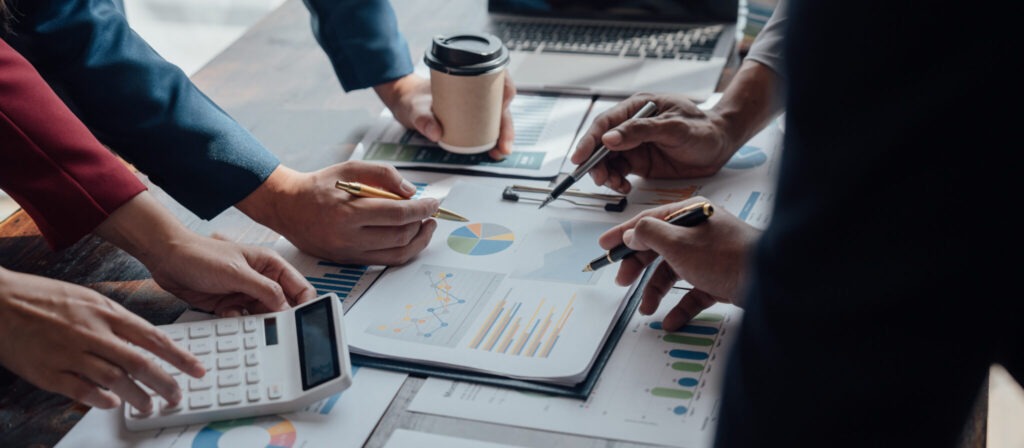Fusion Office Design is a company that specialises in providing business fit-out services. They offer a comprehensive range of services, including space planning, office design, project management, and construction.
We can handle all aspects of the fit-out process, from initial planning and design to final construction and installation, ensuring that the project is completed on time and within agreed costs. We also offer post-occupancy evaluations, which assess the function and performance of the space we’ve designed and fitted out to measure and improve the office spaces created.
We are committed to providing a high level of service and quality and strive to create office spaces that are functional and efficient and reflect the unique identity and culture of our client’s businesses.
Contact our team today if you are looking for an office fit-out service. We are happy to work with you to ensure your budget requirements are met and you are left with a brand new office fit-out suitable for you.
What Is An Office Fit-Out?
An office fit-out refers to designing, arranging and installing fixtures and fittings in an office’s interior space to meet the specific needs and requirements of the business or organisation using the space.
This can include the layout of the space, the selection and placement of furniture, the installation of lighting and other electrical systems, and the use of colour and other design elements to create a cohesive and visually appealing space.agreed cost

What Kind Of Office Fit-Out Are You Searching For?
There are many different types of office fit-outs, depending on the specific needs and goals of the business or organisation.
Some examples include
Open plan offices: This type of fit-out is characterised by an open layout with few if any, permanent walls or partitions. This allows for maximum flexibility and collaboration among employees.
Private offices: This type of fit-out is more traditional, with private offices and conference rooms for meetings and personal work.
Co-working spaces and hybrid office: This type of fit-out is designed for businesses that share space and resources, such as freelancers or small startups. Hybrid office design aims for much more flexibility in work settings, getting away from spaces dominated by desks. Hand in hand with flexible work nodes is a design style much more aligned with nurturing and personality.
Breakout areas: This type of fit-out is designed to create spaces for informal meetings, relaxation, and employee engagement.
Hot desking: This type of fit-out is designed for an office where employees work at different desks daily or for a flexible working environment where employees are only sometimes in the office.
Industry-specific fit-outs: Depending on the industry, specific design elements, equipment and facilities may be needed.
Please let me know if there’s anything specific you would like to know; I’ll be happy to provide more information.
How Do You Decide On A Budget For Your Office Fit-Out?
Deciding on a budget for an office fit-out can be a complex process, as there are many factors to consider. One of the first steps in determining your budget is to set out your needs. Before creating a budget, you’ll need to clearly understand what your office needs regarding space, layout, and functionality. This includes factors such as how many employees will work in the office, the tasks they’ll be performing, and the image you want to project to clients and visitors.
Once you know what you need, you can begin researching costs for various fit-out elements, such as flooring, lighting, and furniture. This research should also include the costs for design, project management, and building permits. After researching the costs, you can compare them to your overall budget. If the costs exceed your budget, you must prioritise the essential elements and adjust accordingly.
Creating a detailed plan is also an essential step in the budgeting process. This plan should include all the elements you want to include in the fit-out and their associated costs. This will help you keep track of your spending and ensure that you stay within budget. Reviewing and adjusting the plan and budget is also essential to ensure everything is on track and to account for any unexpected costs.
Consider consulting with fit-out experts, such as an office design and build company, who include project management and architectural type services for building regulations. They can help you estimate and plan the budget and also help you to find the most cost-effective solutions that meet your needs and budget. Additionally, it’s always a good idea to have a contingency budget of around 10-15% of the total budget to cover unforeseen costs.
All of the above planning steps can be carried out by our team here at Fusion Office Design; we have been providing companies with office fit-out services for many years.

What Should You Prioritise In Your Office Fit-Out?
Several key factors must be considered and prioritised when planning an office fit-out.
Functionality: The primary goal of an office fit-out is to create a functional space that meets the needs of employees and the business. This includes creating a layout that supports efficient workflow and collaboration, as well as ensuring that there is enough space for employees to work comfortably.
Ergonomics: Employees spend a significant portion of their day in the office, so it’s important to consider ergonomics when planning a fit-out. This includes proper lighting, adjustable desks and chairs, and positioning computer monitors to reduce strain on the eyes and neck.
Branding and image: The office space is often the first impression for clients, customers and partners and should reflect the company’s brand, culture and image. The fit-out should be planned and executed in a way that is consistent with the company’s image and values, making it an inspiring and welcoming environment.
Technology: As technology plays an increasingly important role in how business is done, it’s important to ensure that your office is equipped with the necessary technology infrastructure. This includes internet connectivity, power outlets, data cabling, and ensuring that the office space can accommodate new technologies as they are introduced.
Comfort: A comfortable work environment is crucial for employee productivity, satisfaction, and well-being. This includes providing comfortable furniture, break-out areas, good air quality, natural light, proper acoustics and appropriate temperature control.
Sustainability: Many companies prioritise sustainability in their fit-out plans in today’s environment. This includes using sustainable materials, incorporating energy-efficient features, and designing spaces that promote health and well-being. A flexible office can also be an aid as it makes the space better adapt to changing demands, reducing the need to rip-out and start again.
Prioritising these factors will help to create an office space that is functional, efficient, and conducive to productivity and employee satisfaction.
While it may be tempting to prioritise aesthetics over function, it’s important to remember that the primary goal of an office fit-out is to create a space tailored to the needs of the business and its employees.